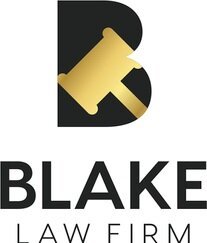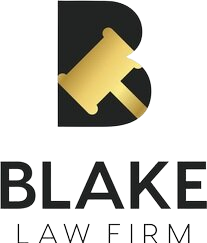Foreclosure on commercial property
In California, if a borrower defaults on a loan that is secured against commercial real property, the lender typically has the option to foreclose on the property provided that the loan documents contain a power of sale clause, which in many ways is similar to a foreclosure of residential property. Assuming that the borrower has defaulted on the loan, the lender can accomplish the foreclosure by either a nonjudicial foreclosure or by a judicial foreclosure. The biggest difference is the non-judicial foreclosure takes place outside of the court system, whereby the judicial foreclosure involves the lender filing a lawsuit against the borrower. Nonjudicial and judicial foreclosure can be pursued simultaneously, however, generally only one method can be carried through to completion due to California’s One-Action rule. The nonjudicial and judicial foreclosure rules are voluminous, technical and complex, therefore, this article only attempts to give a general summary of the processes involved.
Non-Judicial Foreclosure:
A nonjudicial foreclosure is generally preferred for a lender in California because it is much quicker and less costly than going through the judicial foreclosure process. A nonjudicial foreclosure does not involve any court proceedings but is subject to statutes regulating the foreclosure sale procedure. In order for a lender to foreclose in this manner, the contract between the lender and borrower must contain certain language, generally referred to as a power of sale clause, and must be secured against the property by a Deed of Trust.
The nonjudicial foreclosure process begins by having the lender, or its duly appointed trustee, record a Notice of Default in the office of the county recorder in the county where the property is located. Once the Notice of Default is recorded, the borrower has three months to cure the default (i.e. pay the debt) or else the lender may proceed to record a Notice of Sale, which will identify a sale date no earlier than 20 days after the three month period expired in the Notice of Default. Notwithstanding, the borrower has the right to cure the default by no later than five days before the sale. In the event the borrower does not cure, the foreclosure sale can then proceed via a public auction in the county where the property is located, whereat the highest bidder can purchase the property. A duly conducted nonjudicial foreclosure sale constitutes a final adjudication of the borrower's and lender's rights. The purchaser ordinarily receives title to the property under the trustee's deed free and clear of any right, title or interest of the borrower. The borrower has no post-sale redemption rights.
The one downside to nonjudicial foreclosures is that the lender, except in limited circumstances, is prohibited under California Code of Civil Procedure section 580d from suing the borrower for any deficiency between the sale proceeds and the total amount of the loan. Therefore, if the property has dropped in value and thus is worth less than the amount of the outstanding secured debt at the time of foreclosure, the lender forfeits any claim against the borrower for the difference (deficiency).
Judicial Foreclosure:
In some cases, if the mortgage does not contain a "power of sale" clause, the lender may need to file a lawsuit to obtain a court order to foreclose. This initiates the judicial foreclosure process. The beneficiary must sue all parties having subordinate interests in the property in order to extinguish their interests upon the foreclosure sale. If successful, the beneficiary will obtain a judgment ordering the sale of the property. The property is then auctioned off at a public sale, usually conducted by the county sheriff or a designated auctioneer. The highest bidder becomes the new owner of the property. The proceeds of the sale are then paid out—first, to the beneficiary/lender, and thereafter to any junior lienholder.
A key advantage to judicial foreclosure proceedings is that in most cases the lender can obtain a deficiency judgment against the borrower, which is generally prohibited with non-judicial foreclosures. The primary disadvantage of judicial foreclosures is that they are court proceedings and can take time and money to prosecute.
Other Considerations:
When foreclosing on property and/or pursuing a judgment against a defaulted borrower, it is important to understand California’s One-Action Rule. The One-Action Rule in California is a legal principle that governs how lenders can pursue remedies in cases of mortgage default. It is designed to protect borrowers from multiple legal actions by a lender following a default on a mortgage loan. The key principle behind the One-Action Rule is to prevent lenders from taking multiple actions against the borrower, such as foreclosing on the property and simultaneously pursuing a deficiency judgment. By requiring lenders to choose one action, the rule aims to protect borrowers from excessive legal actions and potential financial ruin.
Another option a lender can take to avoid the inconvenience that often accompanies a formal foreclosure, is to negotiate a “deed in lieu of foreclosure” with the borrower. It is a voluntary agreement where the borrower transfers ownership of the property to the lender in exchange for the lender agreeing to release the borrower from their mortgage obligations. Deeds in lieu of foreclosure can be beneficial for both borrowers and lenders in certain situations. Borrowers can avoid the stigma and credit damage associated with foreclosure, and lenders can save time and costs compared to a full foreclosure process.
A final hurdle for lenders that foreclose on real property is how to handle the property if there is a tenant in possession at the time of foreclosure. In most situations, even though the property ownership has changed due to foreclosure, the new owner is typically required to honor the existing lease agreement with the tenant.
It's important for both lenders and borrower to understand their rights and responsibilities in cases of foreclosing on real property. Consulting legal professionals who are well-versed in real estate and tenancy laws can help navigate the complexities of these situations and ensure that the rights of all parties involved are upheld.



